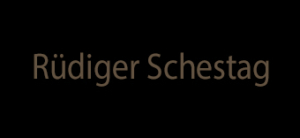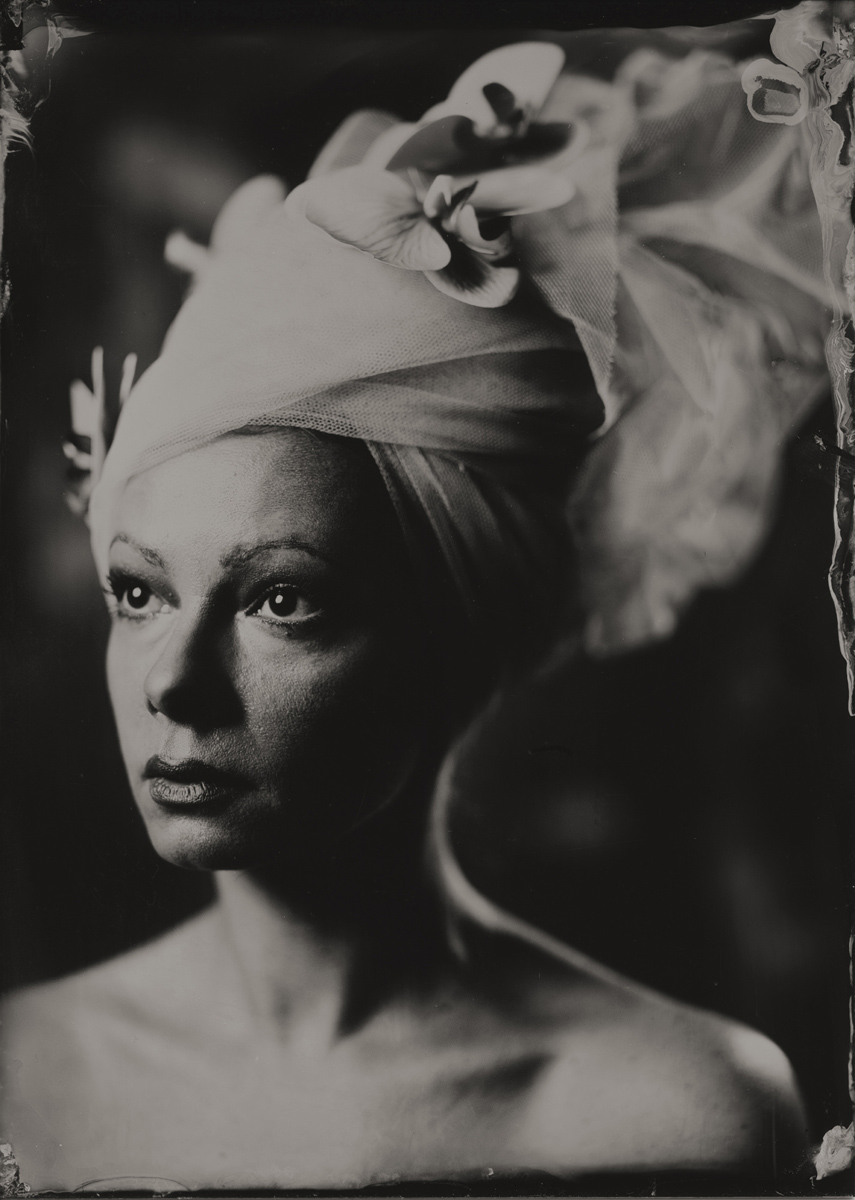„Nasses Kollodiumverfahren“ (wet plate)
Das nasse Kollodiumverfahren wurde 1851 Frederick Scott Archer und Gustave Le Gray entwickelt. Es ist damit nach der Daguerrotypie das zweite erfolgreiche analoge fotografische Verfahren. Fotografiert wird auf einem Träger aus Glas (Ambrotypie) oder Metall (Ferrotypie, TinType), der kurz vor der Aufnahme mit jodiertem (und auch bromiertem) Kollodium beschichtet wird, welches in Silbernitratlösung getränkt, dann das Silber zu lichtempfindlichen Silberhalogenid umwandelt. Das Bild wird unmittelbar danach belichtet und entwickelt (solange die Beschichtung nass ist, darum der Name).
Workshop
Lernen Sie den Kollodium-Prozess und die Faszination der Silberbilder kennen. Machen Sie eigene Aufnahmen als Ambrotypie oder Tintype (Fotos auf Glasplatte oder Aluminium).
Inhalte des Workshops:
- Einführung in die Geschichte des Wetplate-Kollodium-Prozesses.
- Großbild Kamerabedienung: Vorstellung der Holzkameras und Objektive
- Grundlagen der Chemie und des Prozesses: Workflow Kollodiumplatten vorbereiten
- Praktische Demonstration: fotografieren, Entwicklung und Lackierung
- Sicherheit im Umgang mit der Chemie.
- Chemie und Labor: Erläuterung der notwendigen Ausrüstung und der erforderlichen Chemikalien, deren Lagerung und Beschaffung.
- Equipment
- Feinheiten bei der Aufnahme (Blitz und Sonnenlicht)
- Wartung der Chemikalien
Jeder Teilnehmer hat die Möglichkeit, eigene Wetplates herzustellen
Preise
in Berlin vor Ort
1 Tagesworkshop
320,- € pro Person (280,- € * ab 2 Teilnehmer)
2 Tage Workshop (advanced)
590,- € pro Person (410,- € * ab 2 Teilnehmer)
* Preise pro Person
Modelle: Die Teilnehmer fotografieren sich gegenseitig. Auf Wunsch kann ein Modell gebucht werden (Kosten werden dann geteilt, Modelle können auch mitgebracht werden)
Workshops ausserhalb Berlins und für gewerbliche Veranstalter auf Anfrage.
Kontakt: mail@ruediger-schestag.de
alle Preise incl. 19% MwSt
„Wet collodion process“ (wet plate)
The wet collodion process was developed in 1851 by Frederick Scott Archer and Gustave Le Gray. This makes it the second successful analogue photographic process after the daguerrotype. Photographs are taken on a support made of glass (ambrotype) or metal (ferrotype, TinType), which is coated with iodinated (and also brominated) collodion shortly before the photograph is taken. The collodion is soaked in a silver nitrate solution and then converts the silver into light-sensitive silver halide. The image is immediately exposed and developed (while the coating is wet, hence the name).
workshops
Get to know the collodion process and the fascination of silver images. Take your own photos as ambrotype or tintype (photos on glass plate or aluminum).
Contents of the workshop:
Introduction to the history of the wetplate collodion process.
Large screen camera operation: Presentation of the wooden cameras and lenses
Basic Chemistry and Process: Workflow Prepare Collodion Plates
Hands-on demonstration: photographing, developing and painting
Safety in handling chemistry.
Chemistry and Laboratory: Explanation of the necessary equipment and the required chemicals, their storage and procurement.
equipment
Subtleties of shooting (flash and sunlight)
maintenance of the chemicals
Each participant has the opportunity to create their own wetplates
Prices
on site in Berlin
1 day workshop
€320 per person (€280 * from 2 participants)
2 days workshop (advanced)
€590 per person (€410 * from 2 participants)
* Prices per person
Models: The participants take pictures of each other. If desired, a model can be booked (costs are then shared, models can also be brought along)
Workshops outside of Berlin and for commercial organizers on request.
Contact: mail@ruediger-schestag.de
all prices incl. 19% VAT



